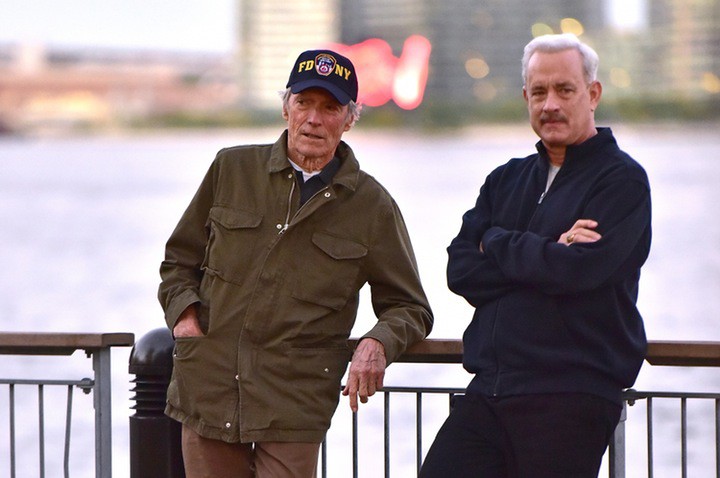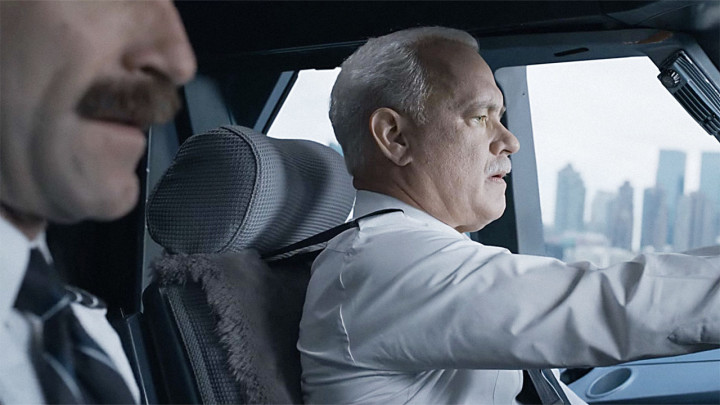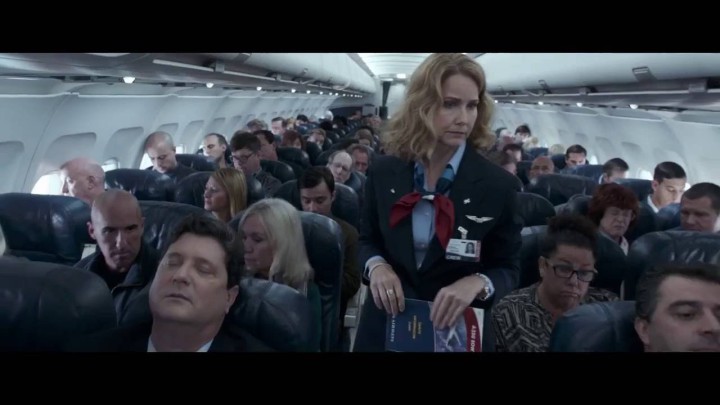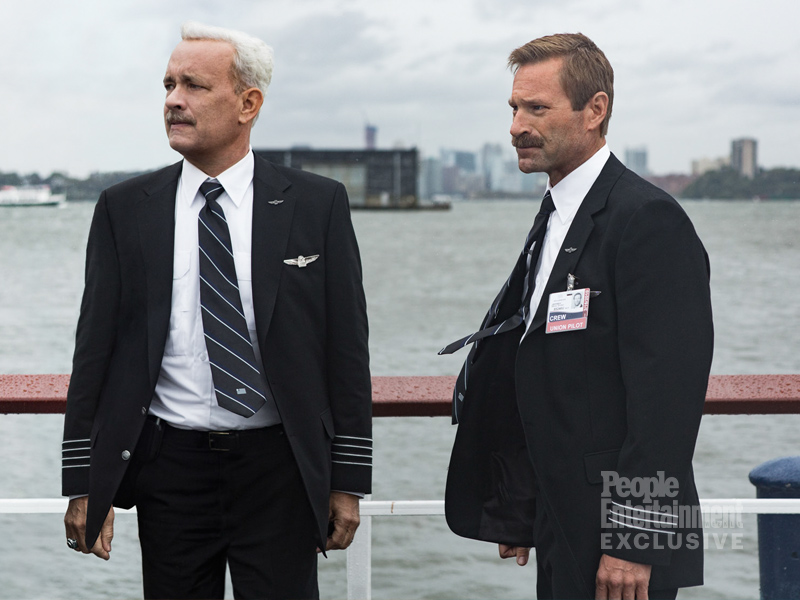 I took a class on Clint Eastwood in college, and his response to my professor’s invitation to speak to the students was a polite “no,” accompanied by the admonition, “Well, don’t bore the kids.”
I took a class on Clint Eastwood in college, and his response to my professor’s invitation to speak to the students was a polite “no,” accompanied by the admonition, “Well, don’t bore the kids.”
Eastwood may be a lot of things, but boring isn’t (usually) one of them. Sully is no exception — an uncomplicated and consistently crowd-pleasing character-piece firmly ensconced in the director’s late-period aesthetic. It’s good without reaching greatness and isn’t particularly deep, but it’s pretty serviceable if you’re in the market for an hour-and-a-half of feel-good fare.
 Detailing the fact-based events of 2009’s so-called “Miracle on the Hudson,” in which US Airways pilot Chesley “Sully” Sullenberger (Tom Hanks) managed to successfully land a crippled jet carrying 155 passengers in the Hudson River without killing anybody (which does border on the miraculous based on my airline experiences), Sully fits squarely with Eastwood’s contemporary oeuvre of adulatory hero-worship. While this film’s charitable treatment of its subject may have required less creative license than 2014’s American Sniper, the resultant lionization bears a similarly simplistic tone.
Detailing the fact-based events of 2009’s so-called “Miracle on the Hudson,” in which US Airways pilot Chesley “Sully” Sullenberger (Tom Hanks) managed to successfully land a crippled jet carrying 155 passengers in the Hudson River without killing anybody (which does border on the miraculous based on my airline experiences), Sully fits squarely with Eastwood’s contemporary oeuvre of adulatory hero-worship. While this film’s charitable treatment of its subject may have required less creative license than 2014’s American Sniper, the resultant lionization bears a similarly simplistic tone.
 Like Sniper, this film touches on issues of post-traumatic stress disorder, but Sully doesn’t do much in the ramification department. Screenwriter Todd Komarnicki’s script, based on the memoir co-authored by Sullenberger, makes some truly bizarre structural choices, and none of them really pay off. Starting off with a PTSD fever-dream that brings to mind 9/11, the film drops its protagonist into the middle of the storyline at the height of Sullenberger’s post-landing (don’t call it a crash, the film insists) overnight celebrity. Several more of these PTSD fantasy sequences ensue, almost all of which are obtrusive, particularly one in which Katie Couric chastises the pilot from his TV screen. When the script finally circles back around in the second act to the actual events of the crash, the pacing bogs down significantly, leading to a third-act confrontation that comes off as something of a predictable anticlimax. Sure, it hits the requisite beats, but a courtroom scene with the National Transportation Safety Board doesn’t pack quite the dramatic punch of the split-second, life-or-death decisions inherent to the water landing.
Like Sniper, this film touches on issues of post-traumatic stress disorder, but Sully doesn’t do much in the ramification department. Screenwriter Todd Komarnicki’s script, based on the memoir co-authored by Sullenberger, makes some truly bizarre structural choices, and none of them really pay off. Starting off with a PTSD fever-dream that brings to mind 9/11, the film drops its protagonist into the middle of the storyline at the height of Sullenberger’s post-landing (don’t call it a crash, the film insists) overnight celebrity. Several more of these PTSD fantasy sequences ensue, almost all of which are obtrusive, particularly one in which Katie Couric chastises the pilot from his TV screen. When the script finally circles back around in the second act to the actual events of the crash, the pacing bogs down significantly, leading to a third-act confrontation that comes off as something of a predictable anticlimax. Sure, it hits the requisite beats, but a courtroom scene with the National Transportation Safety Board doesn’t pack quite the dramatic punch of the split-second, life-or-death decisions inherent to the water landing.
 It’s this problematic second act that represents the film’s Achilles’ Heel, both from the standpoint of the script and Eastwood’s direction. As with many of Eastwood’s recent films, his career-spanning commitment to bringing his pictures in on time and under budget often shortchanges the effects department. While Eastwood makes competent use of his IMAX cameras throughout most of the film, the CG work on the water landing itself is sloppy enough to be distracting. But the film’s most glaring error, both directorially and narratively, is its misrepresentation of LaGuardia’s airport staff as being extremely helpful and friendly. I obviously can’t speak to everyone’s experience, but, having flown out of said airport many times, the implausibility of this depiction immediately ruptured my suspension of disbelief.
It’s this problematic second act that represents the film’s Achilles’ Heel, both from the standpoint of the script and Eastwood’s direction. As with many of Eastwood’s recent films, his career-spanning commitment to bringing his pictures in on time and under budget often shortchanges the effects department. While Eastwood makes competent use of his IMAX cameras throughout most of the film, the CG work on the water landing itself is sloppy enough to be distracting. But the film’s most glaring error, both directorially and narratively, is its misrepresentation of LaGuardia’s airport staff as being extremely helpful and friendly. I obviously can’t speak to everyone’s experience, but, having flown out of said airport many times, the implausibility of this depiction immediately ruptured my suspension of disbelief.
Despite the issues with its narrative structure and pacing, Sully‘s still pretty enjoyable, and most of that credit has to go to the cast. Eastwood has always been at his best as an actor’s director, and he draws a suitably subdued performance out of Hanks as Sullenberger. If you had told me years ago that the guy from The ‘Burbs or Bachelor Party or Bosom Buddies would one day have a thriving career regularly playing the Gary Cooper everyman type, I would’ve told you to have your head examined. Yet, here we are. The supporting cast also fares well, with Anna Gunn and Mike O’Malley playing arbitrarily villainous NTSB authority figures trying to keep our rugged individual down, and Aaron Eckhart’s performance as Sullenberger’s co-pilot is only overshadowed by his exceptional Tom Selleck mustache. It would’ve been nice to see Laura Linney get a chance to do more as Mrs. Sullenberger than look worried while talking on the phone, but this does constitute a step up, considering that the last film I saw with her in it was the most recent Teenage Mutant Ninja Turtles sequel.
Sully is a reasonably diverting film that does exactly what it sets out to do with only a modicum of turbulence. If you go in with the appropriate level of expectation for an Eastwood picture of this ilk, there are far worse movies to spend your time and money on. That said, the next time I’m on a long flight and hankering for something Eastwood-helmed, I’d much rather go with The Outlaw Josey Wales. Or Bird. Or Unforgiven. Or White Hunter, Black Heart. Or Play Misty for Me. Anyway, you get the idea. Incidentally, is it wrong that I hope the working title for this one was “Low Plane Drifter”? PG-13 for some peril and brief strong language.
Now playing at Carolina Cinemark, Carmike 10, Regal Biltmore Grande, Epic of Hendersonville, Flat Rock Cinema, Co-ed Brevard




Let’s call Clint’s plot sequence 4,7,1,10,2,9,6, 5,8,3. Want to juggle any of these numbers (scenes)? Go ahead. What difference would it make??
By the way, Selleck’s stache is about half as long (starts closer to his upper lip)
I strongly disagree regarding the perceived disparity between Eckhart’s mustache and that of Selleck. Obviously I’m talking about the classic Magnum-era Selleck ‘stache, and all mustaches are prone to variation over time, but I believe a quick Google image search will support my supposition.
OK Scott; I bow to your obviously superior stache-ology. I wasn’t thinking of decades ago. I’m a big fan of “Blue Bloods”. Hasn’t it changed it since Magnum-time? If not, I repent in dust and ashes>\.